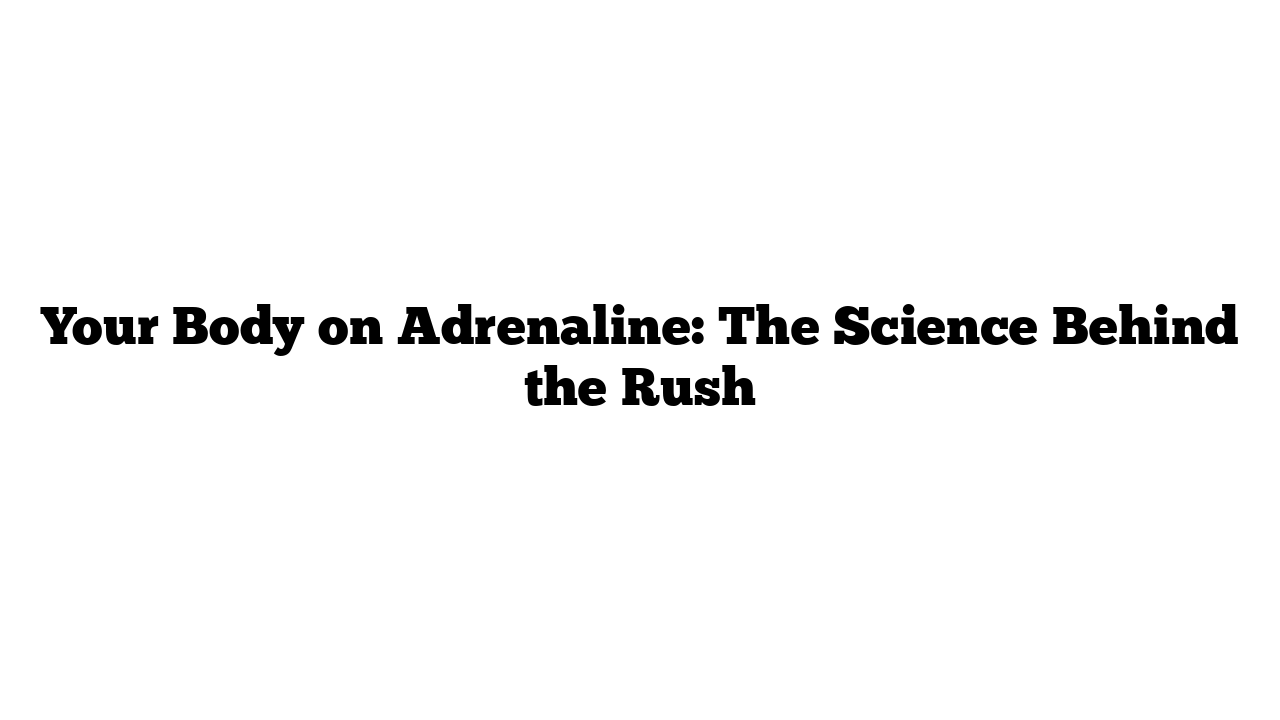Adrenaline, also known as epinephrine, is a powerful hormone that plays a crucial role in the body’s fight-or-flight response. When released, it prepares every organ and muscle for action, helping us respond to threats with remarkable strength and resilience. Let’s explore how adrenaline affects our bodies on a biochemical level.
What Triggers Adrenaline Release?
Adrenaline is produced in the medulla of the adrenal glands, which sit atop the kidneys. The hormone is released when the central nervous system detects a threat. Our nervous system operates in two main states:
- Parasympathetic State: This is our normal state, controlling daily functions like heart rate and digestion. It’s often referred to as the “rest and digest” mode.
- Sympathetic State: This state kicks in during emergencies, activating the fight-or-flight response.
When we perceive a threat, the amygdala and hypothalamus in our brains quickly spring into action. The amygdala helps process emotions like fear, while the hypothalamus manages bodily functions such as heart rate and temperature.
The Chain Reaction
Upon sensing danger, the amygdala alerts the hypothalamus, which activates the sympathetic nervous system. The first step isn’t the release of adrenaline; it’s an increase in breathing and heart rate. This increase ensures that when adrenaline is released, it can be quickly transported throughout the body.
When the heart rate is elevated, the adrenal glands release approximately 500 nanograms of adrenaline into the bloodstream. This rapid release allows adrenaline to bind to alpha and beta-adrenergic receptors, which are found in nearly every cell type.
How Does Adrenaline Affect the Body?
When adrenaline binds to these receptors, it initiates an emergency response that alters the functions of various organs:
- Blood Flow: Adrenaline causes blood vessels in peripheral areas to constrict, redirecting blood to essential organs such as the brain, heart, and muscles.
- Metabolism: The release of insulin is halted, keeping blood sugar levels high for immediate energy use. Additionally, the body ramps up glycogenolysis, converting stored glycogen into glucose for energy.
The Result: Peak Performance
As a result of these changes, the brain, liver, heart, and muscles receive the blood and fuel they need. Adrenaline also causes maximum blood flow and cardiac output, increasing the heart’s rate and strength of contractions. This is why you may feel your heart pounding during an adrenaline rush.
Other effects of adrenaline include:
- Thickening of saliva
- Pupil dilation
- Reduced auditory senses
- Tunnel vision
- Enhanced long-term memory
People often report that during an adrenaline rush, time seems to slow down, allowing them to process information rapidly. This sensation can feel like being in a slow-moving car while traveling at high speeds.
Hysterical Strength: Superhuman Abilities
Adrenaline can enable humans to perform incredible feats of strength, a phenomenon known as hysterical strength. This occurs during extreme situations where adrenaline provides the muscles with the necessary blood, glucose, and oxygen.
Real-Life Examples
There are remarkable accounts of individuals displaying extraordinary strength during emergencies:
- In 2012, Lauren Kornecki lifted a BMW to save her father when it fell on him.
- In 2019, 16-year-old Zachary Clark lifted a 3,000-pound car off a neighbor during an accident.
Adrenaline Beyond Emergencies
Interestingly, adrenaline isn’t only released during emergencies. It can also surge during intense exercise, acting as a last-resort mechanism to help us escape danger, even when physically exhausted.
The Dark Side of Adrenaline
While adrenaline can be beneficial, it has potential downsides in modern society. Enhanced long-term memory can lead to post-traumatic stress disorder (PTSD). What once helped our ancestors survive threats now may trigger stress responses in safe environments.
Research shows that individuals injected with adrenaline exhibit strong negative emotions when shown various stimuli, compared to those who weren’t given adrenaline. This indicates that while adrenaline is an adaptive response, it can also amplify negative feelings.
A Double-Edged Sword
Overall, adrenaline is a remarkable adaptation that can empower us to face danger, enhance physical performance, and help us remember past threats. Understanding its effects can help us appreciate the body’s incredible capabilities while being mindful of its potential drawbacks.
Stay Informed and Empowered!
For more insightful articles on health and science, visit medicaltimes.io.
